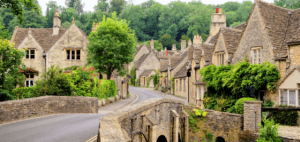Irish Crochet: A Great How-to Guide, History, and Folklore Behind This Traditional 18th Century Craft
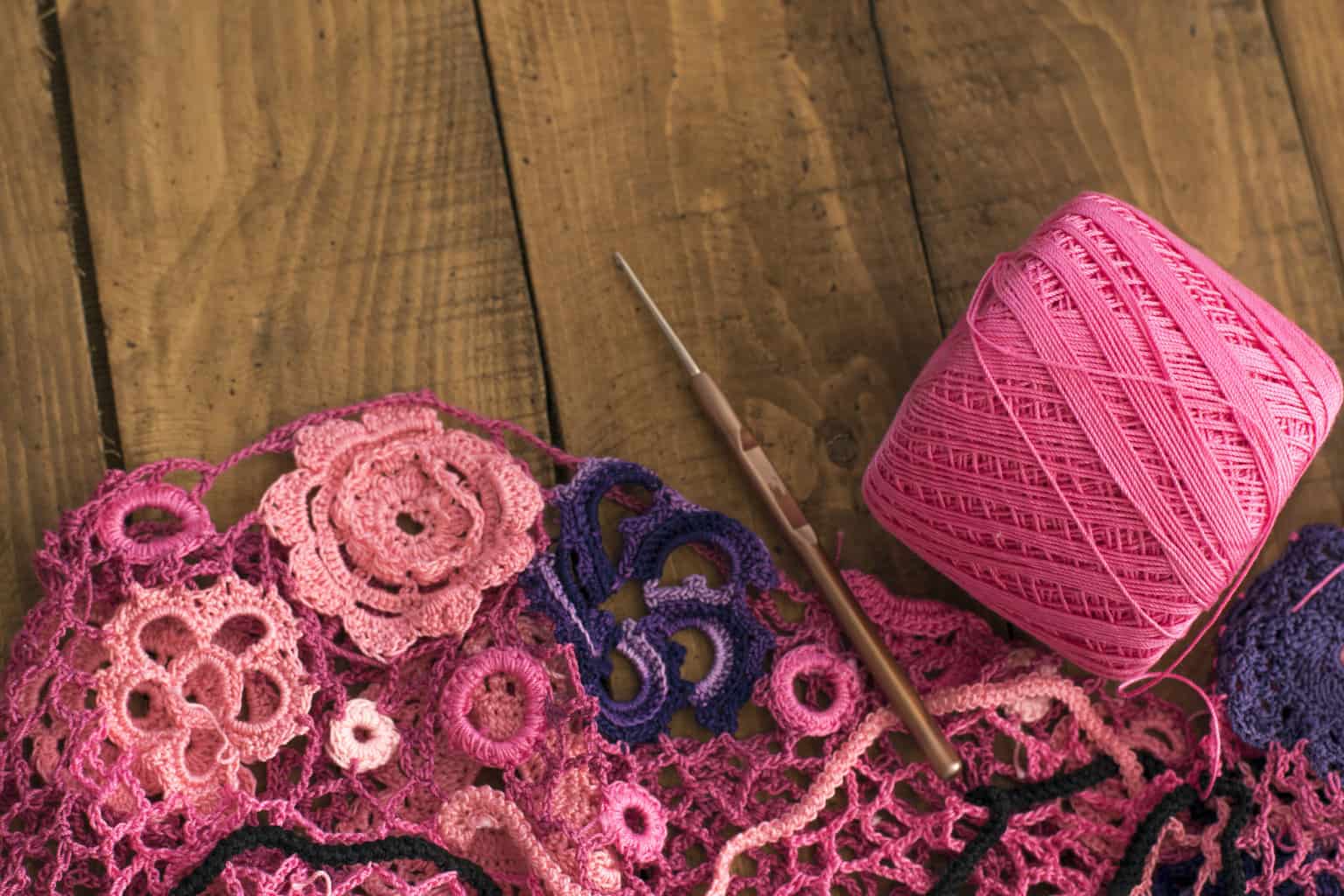
Updated On: April 23, 2024 by Ciaran Connolly
Irish crochet is a delicate and skilful craft that has been practised for centuries. It is renowned for its intricate designs and three-dimensional embellishments. Not only are the works of Irish crochet beautiful to admire, but they are also a testament to the resilience, ingenuity, and creative spirit of the Irish people.
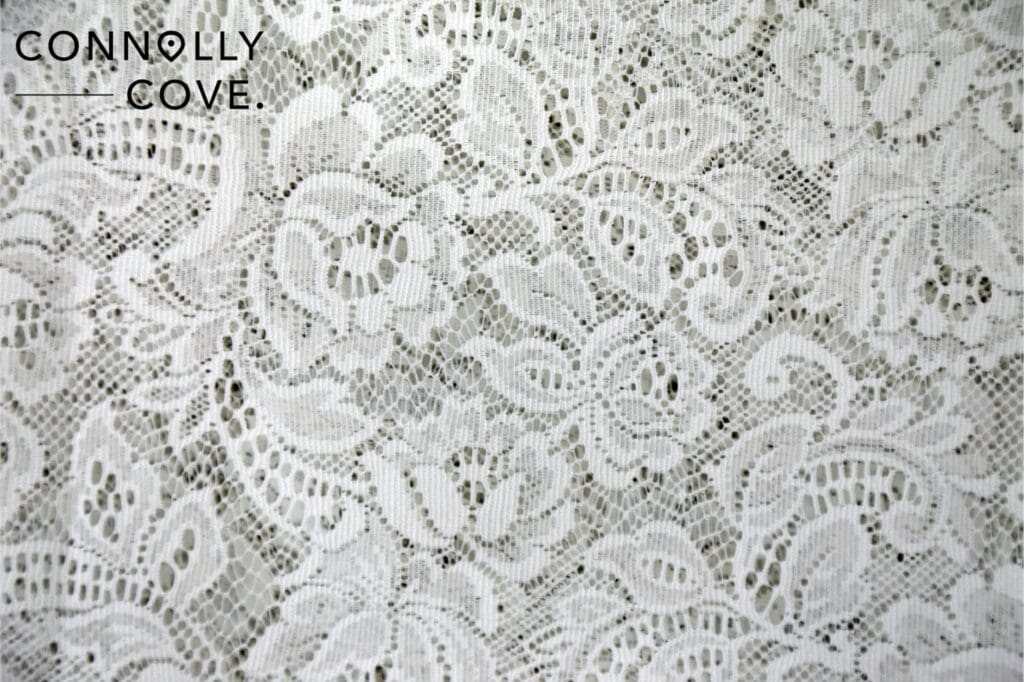
The art of Irish crochet highlights the importance of tradition, innovation, and artistic brilliance. Its intricate details have inspired people in Ireland and around the world to take up the craft themselves. Although it emerged in the 18th century, Irish crochet is still being innovated and adored today.
In this article, we’re exploring the traditional craft of Irish crochet, its history, and how to learn to make Irish lace yourself! Scroll down to read through the article, or click on one of the highlighted sections to skip ahead.
Table of Contents
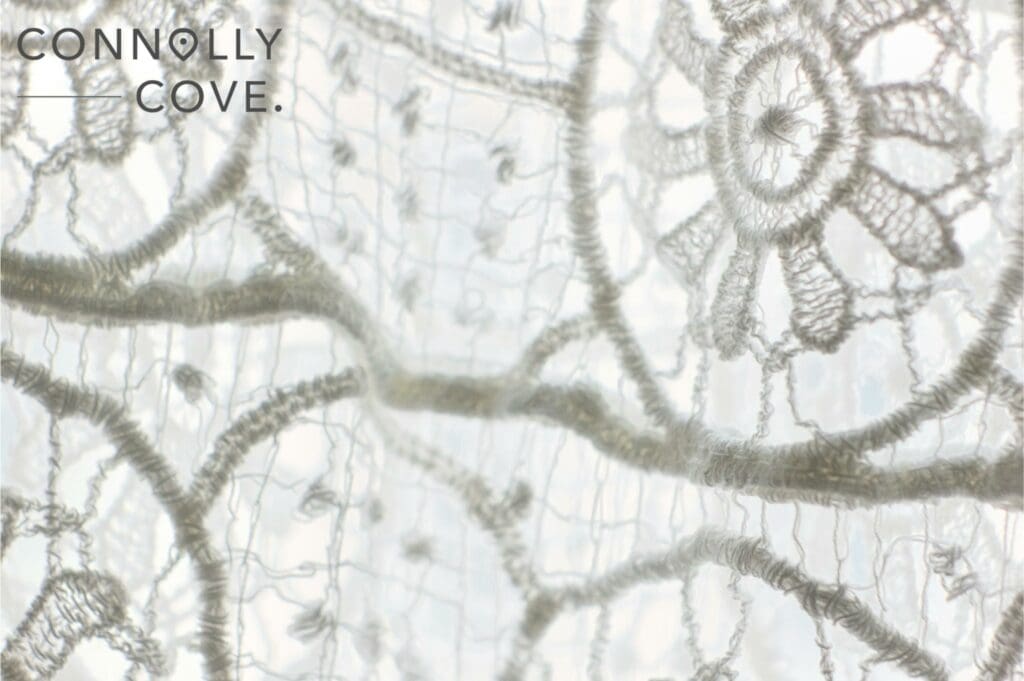
What is Crochet?
Before talking about Irish crochet specifically, it is important to know what crochet is. Crochet is a craft involving the creation of objects, clothing, and blankets with yarn and a crochet hook. Unlike knitting, which uses two needles, crochet uses only one hook. This makes it more open to beginners who have never done yarn crafts before.
Crochet is a highly versatile craft which can create many different things using a variety of stitches. Crochet stitches are created when a loop of yarn is brought through another loop using the crochet hook. There are many different types of crochet stitches, and depending on how you do them, you can create a different look for each stitch.
Traditional crochet is worked in rounds or chains. Rounds create a circular piece, such as a head for a teddy bear or the sleeve of a sweater. Chains, on the other hand, are straight across and do not connect the two ends. Chains are often used for scarves and blankets.
Although it may seem intimidating, crochet is fun and relatively easy to learn. There are many ways to learn crochet, including YouTube tutorials and online guides. For a more personal experience, you can look up a local crafter who may offer classes or join a crochet club.
What is Irish Crochet?
Irish crochet is a traditional heritage craft. It is a unique and intricate form of crochet that originated in Ireland in the mid-19th century. This version of crochet differs from the style of traditional crochet by specializing in the creation of lace. It gained popularity during the Irish famine in the 1840s as a means of providing income for struggling families.
Instead of being created in rounds or rows all joined together like standard crochet pieces, Irish crochet creates parts of the design individually and then joins them to create an overall design. It can be used to make decorative items such as tablecloths and can also be used to create beautiful clothing such as wedding dresses.
Distinctive Properties of Irish Crochet
Irish crochet pieces are typically made up of multiple motifs, which are joined with background lacework to create one single piece of lace. These motifs often represent natural elements like flowers, leaves, and vines, as well as geometric shapes.
Another defining characteristic of Irish Lace is its raised or 3D elements. Crocheters used techniques like padded loops and bullion stitches to create raised petals, leaves, and other decorative features. This craftsmanship gave the lace a textured and sculptural quality that was breathtakingly beautiful and delicate.
The History of Crochet
The exact birthplace of crochet is unknown, but it is believed to have evolved from various ancient needlework techniques. Some of the earliest examples of crochet-like techniques can be traced back to the 16th century in Europe.
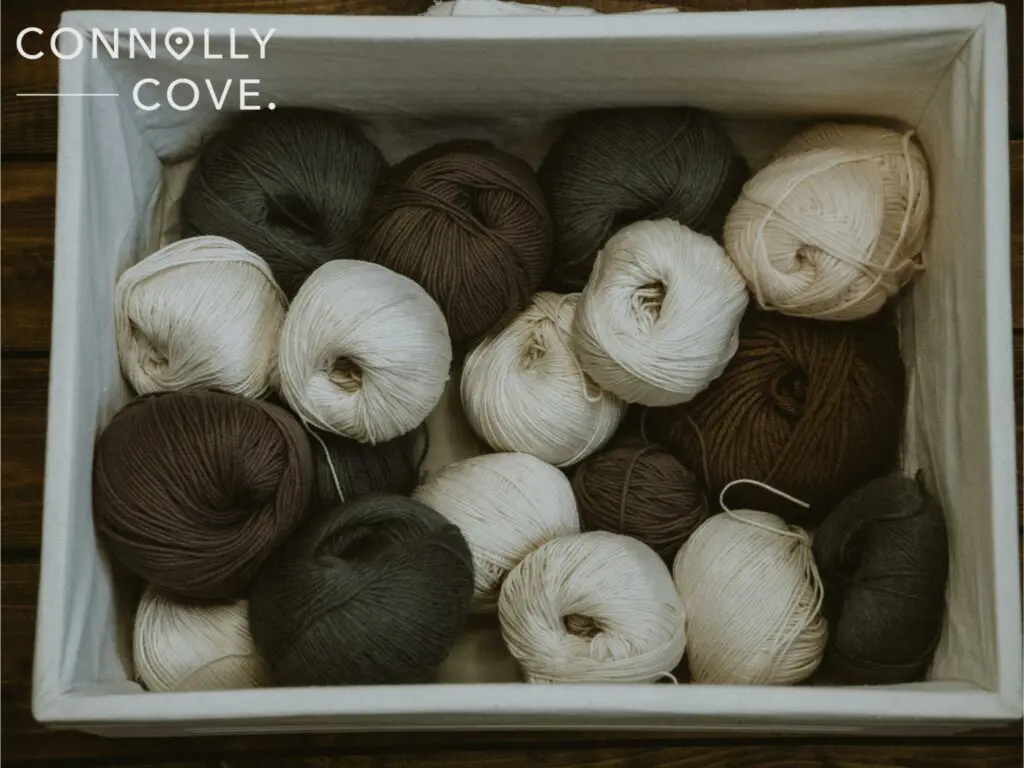
In the 18th century, crochet became more established as a separate craft. Early crochet was known by various names, including “Shepherd’s Knitting” in England and “Nun’s Work” in France. The word crochet is of French origin; it translates to “Little Hook“.
Crochet gained popularity in France during the 19th century, particularly in the early 1800s. Queen Victoria of England also contributed to the craft’s popularity when she took up crochet as a hobby in the mid-19th century.
As European settlers and immigrants travelled to different parts of the world, they brought crochet with them. The craft evolved in various ways in different regions, leading to unique styles and techniques, such as Irish and Tunisian crochet.
The industrial revolution in the 19th century made crochet more accessible to people across the globe. Commercially manufactured yarn was easier to come by, and the craft grew in popularity. This continued into the 20th century when crochet saw trends of resurgence and adaptation. It was popular in the 1960s and 1970s specifically due to the rise of granny squares and boho-inspired crochet fashion.
Today, crochet continues to thrive as a versatile and creative craft. Although it has changed over the years, crochet has seen a recent boom as crafters have taken to social media to share their patterns, tips, and creations.
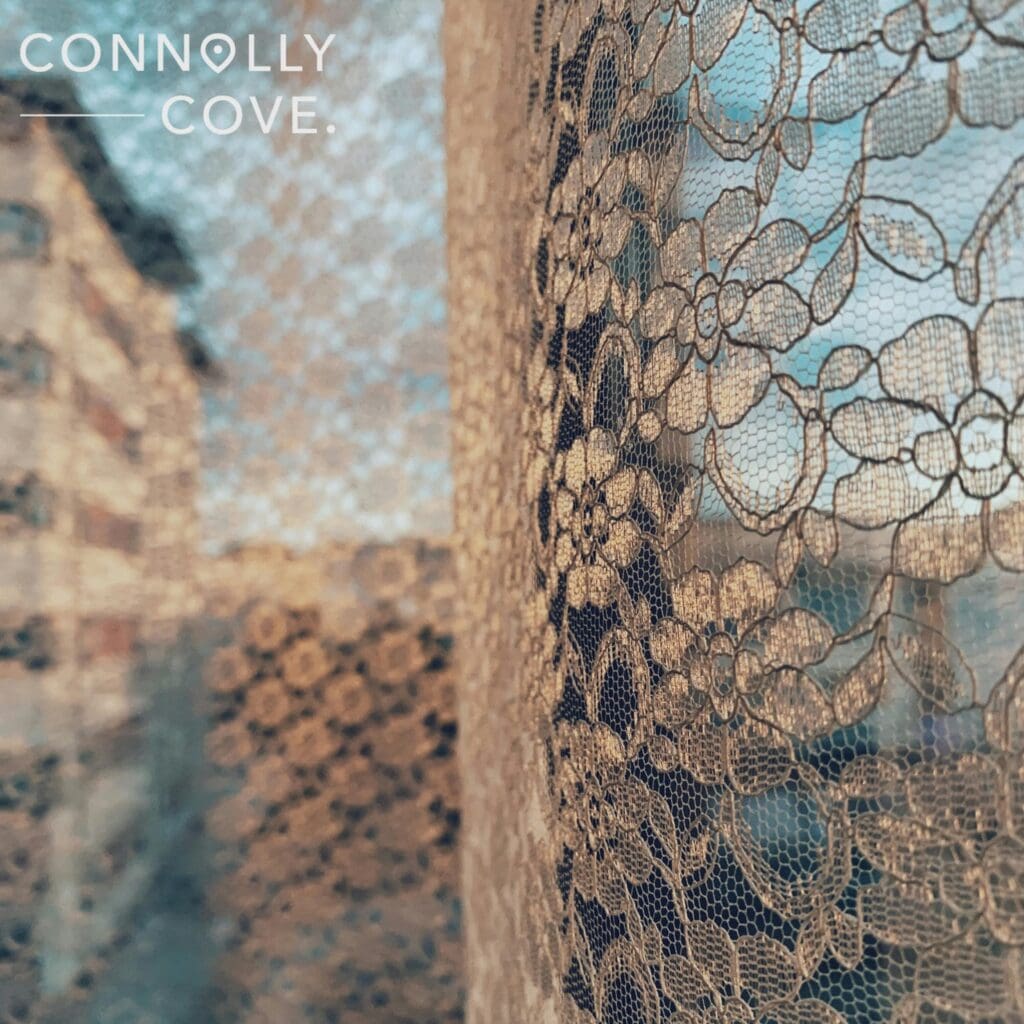
The History of Irish Crochet
Irish crochet lace is believed to have originated in the mid-19th century in Ireland. Textiles have always been an important part of crafting history in Ireland, with the linen industry being one of the country’s five main exports. Linen is also the traditional material used in Irish crochet lace.
It was the Ursuline nuns from France who brought the practice of crochet to Ireland. Crocheting lace was cheaper and more efficient than other methods at the time, and Irish women and children we encouraged to make lace.
The practice of Irish crochet was very important during the Irish potato famine as it aided in stimulating the economy. Crocheting lace was a way for the impoverished people of Ireland to make money for their families; it was a saving grace during a period of economic hardship.
Irish crochet was heavily influenced by tambour embroidery, which was a popular technique in Europe during the 18th and 19th centuries. Tambour embroidery involves creating a chain of small loops using a hook. Irish crocheters adapted this technique to create lace motifs.
Irish crochet lace quickly gained popularity not only in Ireland but also around the world. In parts of Europe and the United States, it became fashionable for clothing and accessories. Irish lace boomed during the late 19th and early 20th centuries.
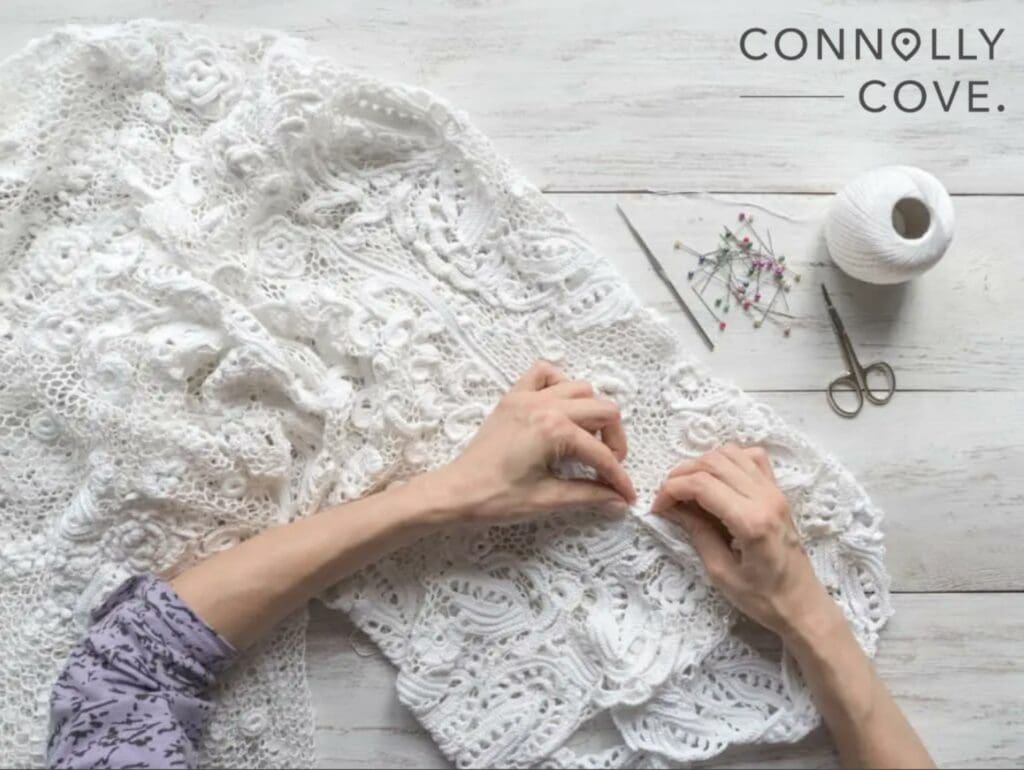
The popularity of Irish crochet has waned over the years due to changing fashion trends and new lace-making techniques. However, the craft saw a revival in the mid-20th century. Many people became interested in vintage and handmade items.
In modern times, Irish crochet has evolved. Contemporary crocheters have adapted the traditional techniques of the craft and incorporated new materials and designs. Today, Irish crochet is still an important part of Ireland’s cultural heritage and a celebrated form of lace-making.
How to Irish Crochet
Irish crochet projects are done by following several steps. The first step to any project is deciding what you are going to make and finding or creating a pattern to follow. After you’ve chosen what the end product will be, you will need to choose what materials to use.
The materials required for a project are often listed in purchased patterns. It can be more difficult to decide on materials when you are creating your own pattern, as they need to be the right weight, colour, and softness. Typically, modern Irish crochet projects are created with lace-weight cotton. Historically, however, they were made with linen thread.
Once you’ve gotten all of the thread and materials you need, you can begin working on the motifs. The motifs are very intricate and may take a bit of time to create, especially for beginners. When all the motifs are done, the next step is to lay them on muslin or other scrap fabric. Make sure they’re placed in the exact arrangement and design you want!
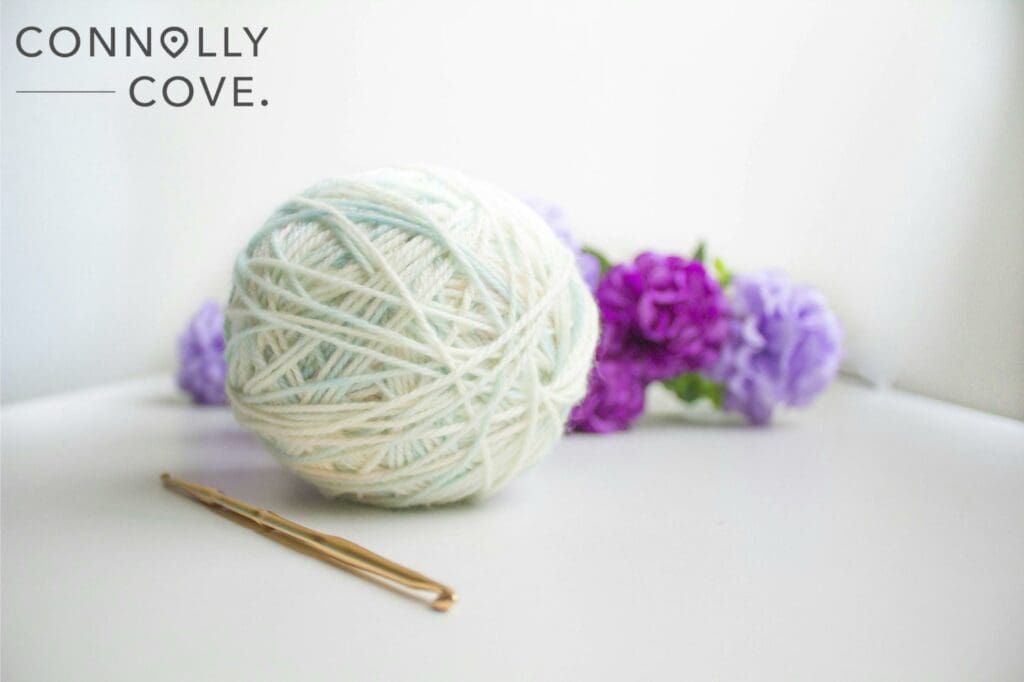
With the motifs still on the scrap fabric, you will pin and stitch the pieces to the cloth using tacking stitches. Tacking stitches are quick, temporary stitches that you will remove later. They are used to hold the motifs in place so you can connect them properly.
After you’ve finished the tacking stitches, the next step is to crochet lace patterns between the motifs to join them in the complete design. During this step, many people add beading within the lace patterns to add another dimension and detail to the lace.
Once you’ve finished connecting the motifs with lace patterns and added any embellishments, turn the muslin or scrap fabric over and use a seam ripper to remove the tacking stitches. It is important to do this on the back of the piece to ensure you won’t snag your lace work.
Separate the lace from the scrap fabric, and voilà! Your Irish lace project is complete!
Where to Find Crochet Patterns
Unlike the people who learned to Irish crochet in the past, we have the benefit of the internet to help us find patterns! Various websites provide patterns, video tutorials, and photos of other completed pieces to use as inspiration for your work.
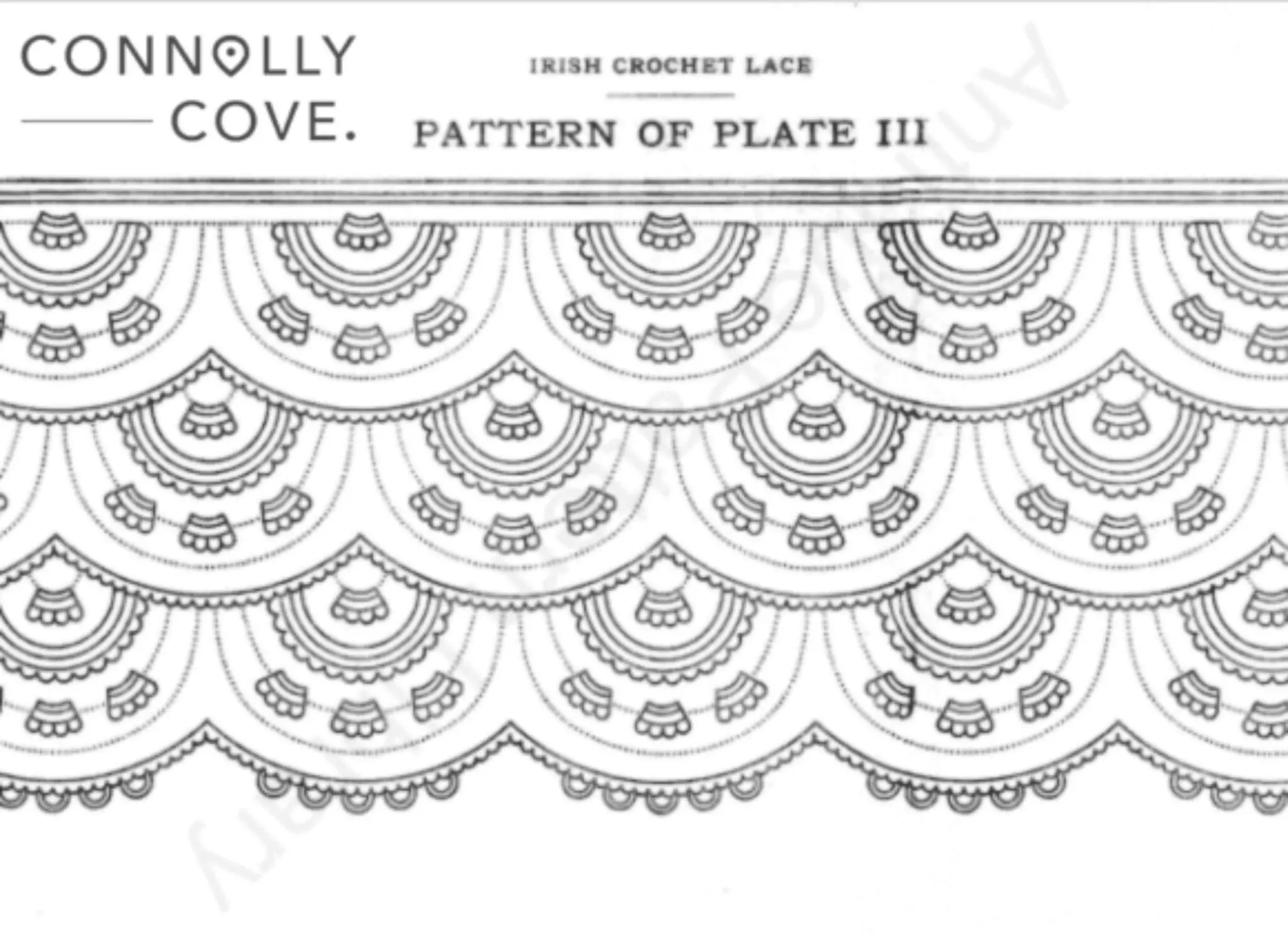
YouTube is a great place to find tutorials for motifs and techniques. Some people even post inspirational videos featuring their previous projects. Additionally, Pinterest is a website full of photos that you can use to help decide what type of garment or piece you want to make.
Some websites, such as Etsy, have patterns that you can purchase from other crocheters. These patterns typically range from beginner-friendly to intricate designs for experts in the craft. If you’re looking for free patterns, The Antique Pattern Library is a website that provides archived patterns that are free to download.
Additionally, there are many books on Irish crochet, which can be found at bookstores and libraries. These books provide patterns and can help you develop your skills in the craft. These are great resources for anyone who prefers a physical version of the pattern instead of reading off of a phone or computer.
How to Design A Crochet Piece
When you’re just learning how to Irish crochet, you may want to follow pre-written patterns. Eventually, with enough practice, you can design your own piece to create using your newfound skills and talent!
Irish crochet is traditionally inspired by nature; it uses plants, flowers, and fauna to inspire the designs immortalized in lace. You can find inspiration online, in a book, or even while exploring national trust sites, coastal beaches, or forests. Once the inspiration for a design strikes, you are ready to design your very own Irish crochet piece!
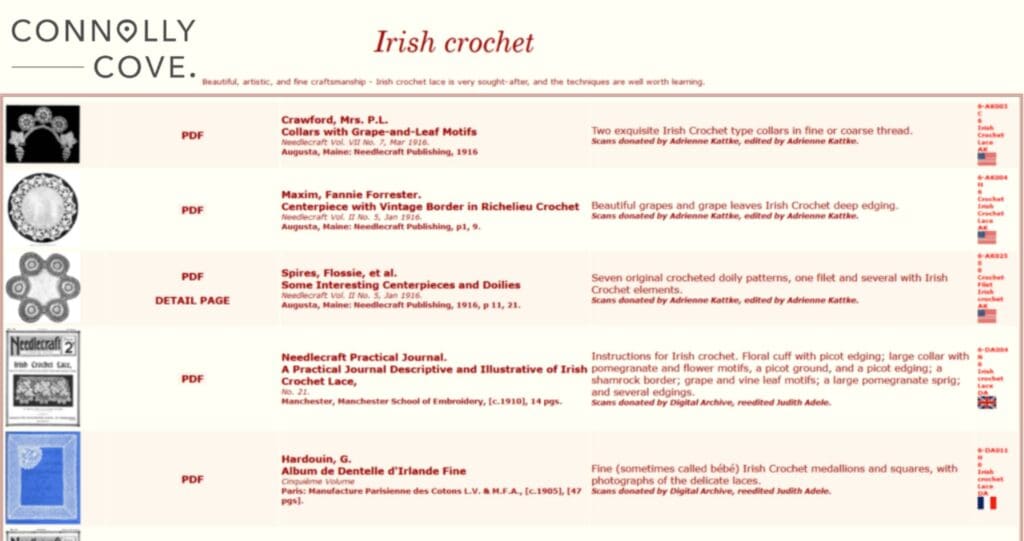
Selecting Your Materials
Choosing which yarn and crochet hook to use is an important step during the design process. There are many different types of yarn to choose from, and the material, thickness, colour, and material will make a large difference in how your piece looks and feels. Irish lace is typically crocheted using thin yarn, but that doesn’t mean you can’t experiment!
The crochet hook that you use will vary based on the characteristics of the yarn and how tight you want your stitches to be. Most store-bought skeins of yarn will have the recommended hook size listed on the label. However, some crocheters will work with a smaller hook than suggested to ensure a tight stitch.
Drawing out Your Design
It is a good idea to draw out your pattern on fabric or foam before you begin crocheting. This will give you a guide while you work. If you draw your design on fabric, you will stitch your elements on as you go; if you’re working on foam, you will pin them. Choose whichever method suits you best, and don’t be afraid to try different techniques as you learn!
Creating the Motifs
When creating Irish crochet lace, it is best to begin by crocheting the middle motif first. This will give your work a solid base to expand on. The centre motif is typically the focal point of the lace and will help set the tone for the rest of the piece.
After finishing the centre motif, expand your work onto the sides. Make sure to pay attention to any details in your pattern, such as raised 3D areas and loops. It can be difficult at first to maintain the same size and yarn tension and make all of the motifs look similar, but don’t give up! Frogging is a part of learning how to crochet, and practice makes perfect.
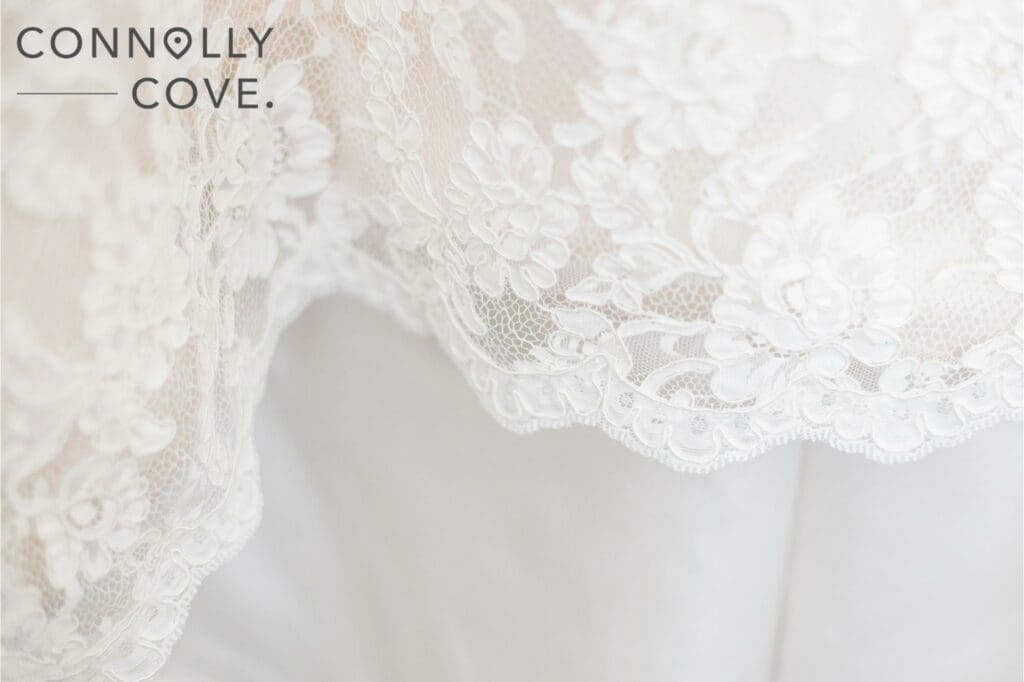
Assembling the Lace
You should join the motifs together as you crochet your piece. This is why drawing out your pattern is so important – it allows you to create the lace in the order you want. After all of the motifs are connected, add any borders or edging. These add a finishing touch to most Irish crochet projects.
Using a filler lace stitch to connect all your elements together will make your piece into a single lace work. During this stage, you can add beads to your work. Beads add colour, texture, and colour to Irish crochet lace.
Once all your elements are connected, the lace can be unpinned or unstitched from the backing where you drew your design, leaving you with a piece of Irish crochet lace.
Documenting Your Pattern
As you go through the process of creating your Irish crochet pattern, make sure to write it down and take notes! Irish crochet lace is a very intricate and detailed craft, and it can be easy to forget how you made a motif or design if you don’t have a written pattern.
It is okay to jot down messy notes during the initial planning phase and while you are working on your lace. After it is completed, you can go back to your notes and rewrite the pattern more efficiently. Make sure to keep your written pattern in a good place so you can remake your piece in the future!
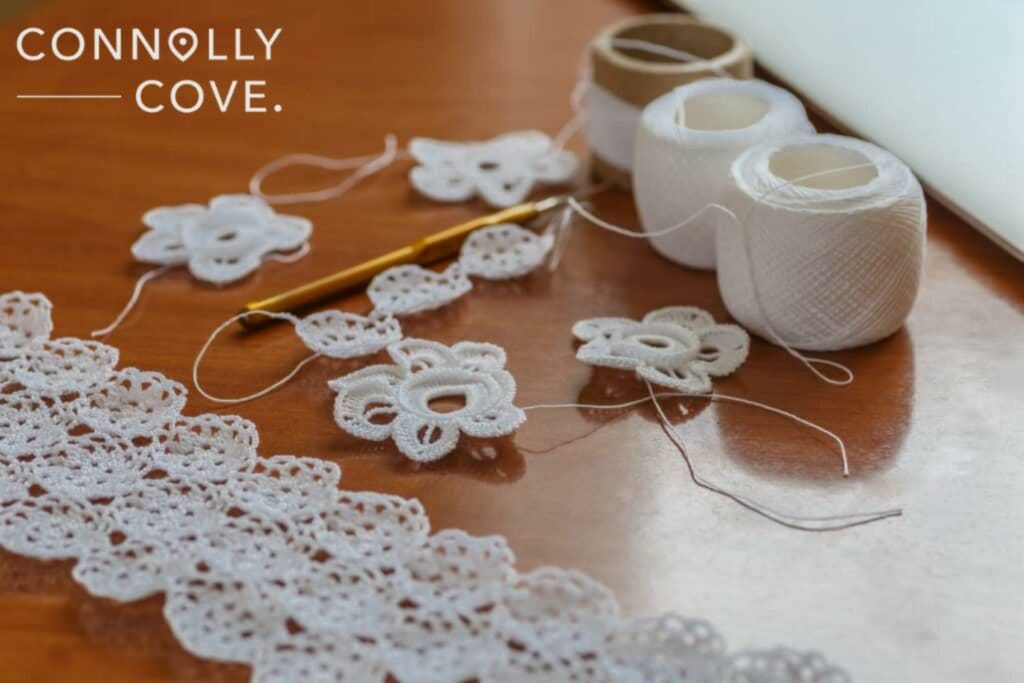
Folklore Around Irish Crochet
Many traditional Irish crafts have links to folklore and myths around them. For example, when making potato farls, they are rolled out into a circle and then cut with a cross to let fairies escape. These bits of folklore connect ordinary items to Ireland’s unique history and traditions.
Irish crochet is also connected to Irish folklore. The legends say that when you crochet a piece of Irish lace, a bit of your soul becomes trapped within it. This belief makes sense, as crocheters put a lot of work into their creations, and often do put their heart and soul into what they make.
Because of this, it is believed that leaving a mistake in each piece of Irish crochet lace will ensure that your soul can escape. So, if you make a mistake while crocheting, don’t worry! You’re just making sure that the piece of your soul that you put into the lace can escape and come back to you.
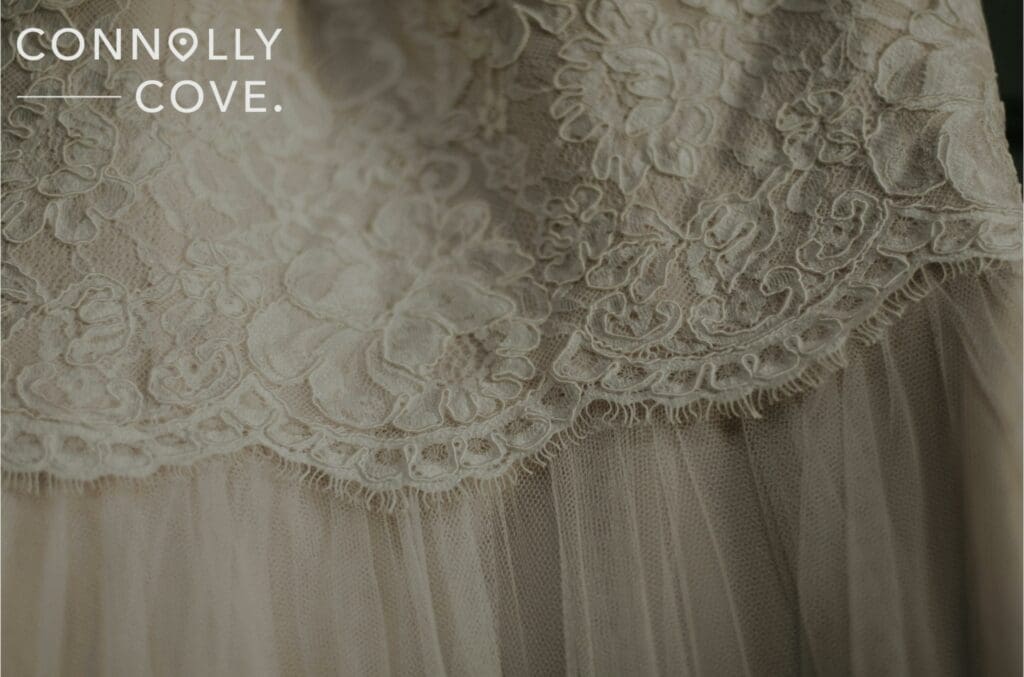
Irish Crochet is a Beloved Traditional Craft
Irish crochet lace has withstood the boundaries of time and tradition. From its origins as a means of economic survival during the Irish Famine to its emergence as a symbol of Irish culture, craftsmanship, and resilience, Irish crochet lace is a treasured craft.
Irish crochet lace not only adorns clothing, accessories, and home decor but also carries with it a legacy of creativity, adaptability, and the will of the Irish people. Whether you’re an expert crocheter or are just beginning to learn the craft, Irish crochet is a fantastic hobby full of history, tradition, and innovation.
If you enjoyed this article, check out some of our other blogs:
Top 10 Fascinating Irish Landmarks to Explore | The Irish Harp | The Irish Flag: All About Its Symbolism and Design | 9 Traditional Irish Crafts & Their Fascinating History | Irish Mythological Creatures: the Mischievous, the Cute, and the Terrifying | Top 10 Incredible Irish Instruments | The Ultimate Guide to Irish Slang



